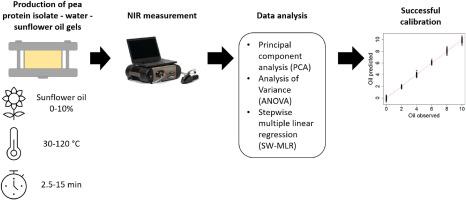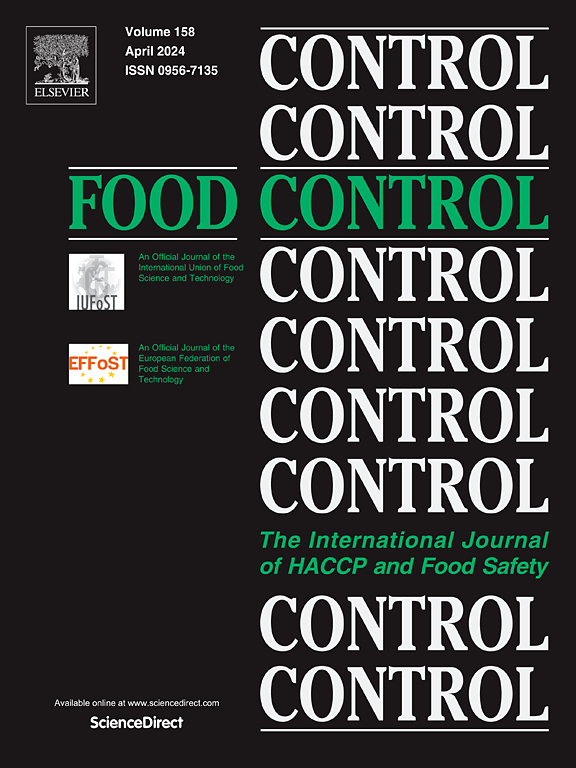Wavelength selection enables robust quantification of oil content with near-infrared spectroscopy in pea protein gels produced under varying heating conditions
IF 5.6
1区 农林科学
Q1 FOOD SCIENCE & TECHNOLOGY
引用次数: 0
Abstract
Thermal processing influences the near-infrared (NIR) spectra of food products, causing inaccuracy when quantifying the composition of the product. In this study, the effect of thermal processing on NIR measurements of the oil content in pea protein isolate (PPI) gels was investigated. Analysis of variance showed that the heating temperature (30°C–120 °C) during the production of PPI gels influenced large parts of the NIR spectra and time (2.5–15 min) only had a limited effect. Stepwise multiple linear regression was used to select a combination of 5 wavelengths that was suitable to create a robust model for the prediction of oil content (Q2 = 0.9928 ± 0.002, root mean standard error of prediction = 0.2806 ± 0.0423 wt%). This combination of wavelengths was shown to reduce the effect of the history of thermal processing on the measurement, improving the accuracy of oil content quantification. This approach can be applied for in-line quantification of the oil content of food products subjected to varying heating conditions using specialized sensors.

通过波长选择,可在不同加热条件下利用近红外光谱对豌豆蛋白凝胶中的油脂含量进行可靠定量
热加工会影响食品的近红外光谱(NIR),导致产品成分定量不准确。本研究调查了热加工对豌豆蛋白分离物(PPI)凝胶中油含量的近红外测量的影响。方差分析显示,PPI 凝胶生产过程中的加热温度(30°C-120°C)对近红外光谱的大部分有影响,而时间(2.5-15 分钟)的影响有限。使用逐步多元线性回归法选择了 5 个波长的组合,该组合适合建立一个预测油含量的稳健模型(Q2 = 0.9928 ± 0.002,预测的根平均标准误差 = 0.2806 ± 0.0423 wt%)。结果表明,这种波长组合可减少热处理历史对测量的影响,从而提高油含量定量的准确性。这种方法可用于使用专用传感器对不同加热条件下的食品进行油含量在线定量。
本文章由计算机程序翻译,如有差异,请以英文原文为准。
求助全文
约1分钟内获得全文
求助全文
来源期刊

Food Control
工程技术-食品科技
CiteScore
12.20
自引率
6.70%
发文量
758
审稿时长
33 days
期刊介绍:
Food Control is an international journal that provides essential information for those involved in food safety and process control.
Food Control covers the below areas that relate to food process control or to food safety of human foods:
• Microbial food safety and antimicrobial systems
• Mycotoxins
• Hazard analysis, HACCP and food safety objectives
• Risk assessment, including microbial and chemical hazards
• Quality assurance
• Good manufacturing practices
• Food process systems design and control
• Food Packaging technology and materials in contact with foods
• Rapid methods of analysis and detection, including sensor technology
• Codes of practice, legislation and international harmonization
• Consumer issues
• Education, training and research needs.
The scope of Food Control is comprehensive and includes original research papers, authoritative reviews, short communications, comment articles that report on new developments in food control, and position papers.
 求助内容:
求助内容: 应助结果提醒方式:
应助结果提醒方式:


